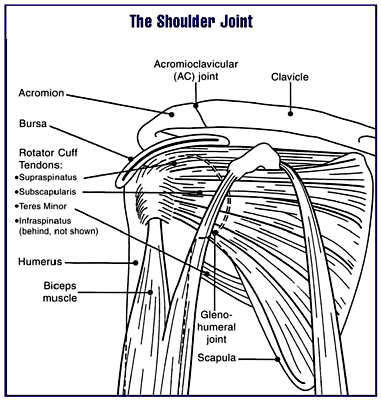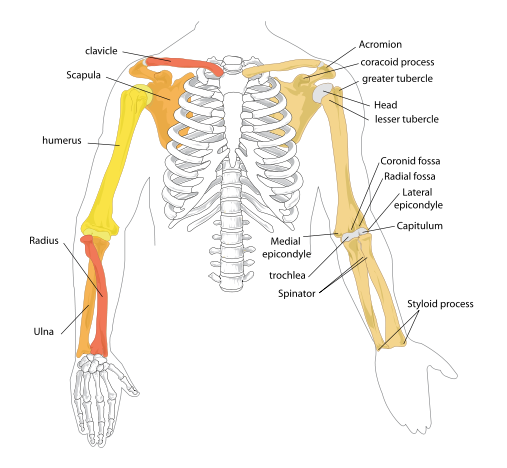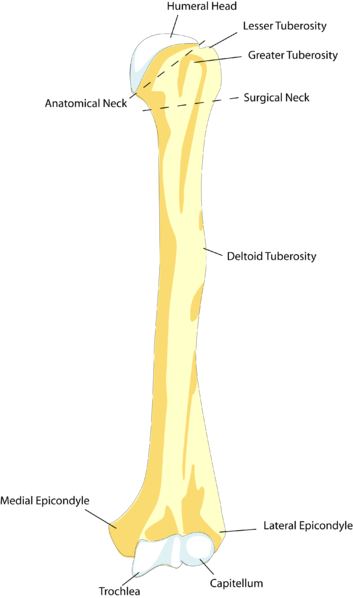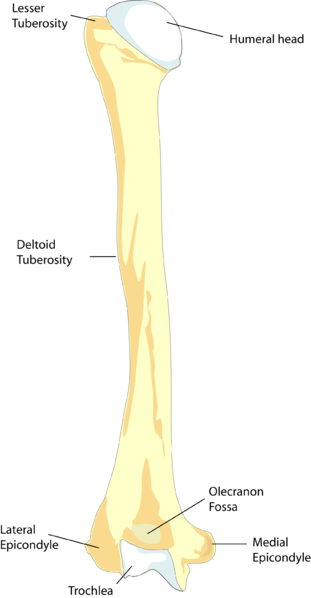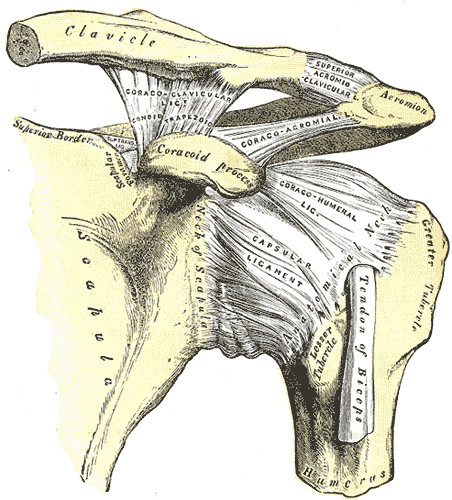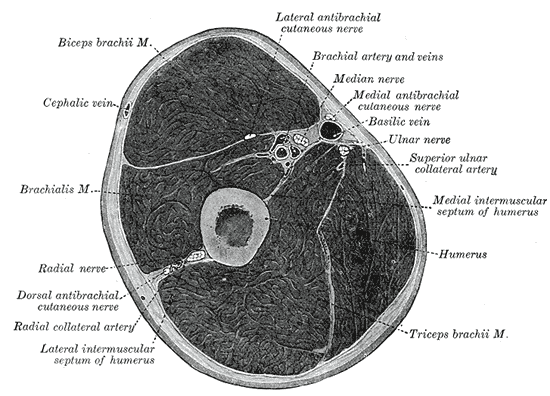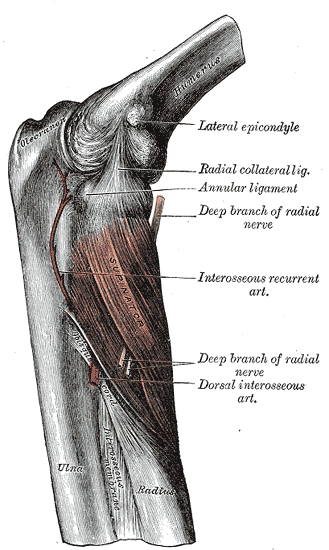Humerus
Template:Infobox Bone Editor-In-Chief: C. Michael Gibson, M.S., M.D. [1]
Overview
The humerus is a long bone in the arm that runs from the shoulder to the elbow. On a skeleton, it fits between the scapula and the ulna. It consists of the following three sections:
Articulations
A bursa lies between the scapula and the chest wall, and allows the scapula to move over the chest wall. Movements of the shoulder are actually often combined movements of the glenohumeral joint as well as movement of the scapula on the chest wall.
The distal end of the humerus (at the elbow) creates a hinge joint with the ulna, allowing only flexion and extension. This happens on the trochlea of the humerus. Two pits at this end of the humerus (the coronoid fossa and the olecranon fossa) allow the ulna room to move, but prevent it from over-flexing/extending.
There is also a pivot joint between the capitulum (sometimes called the capitellum) of the humerus, and the head of the radius. This allows the hand to pronate and supinate (turn to face downwards or upwards).
Muscle attachments
A variety of muscles attach to the humerus. These enable movement at the elbow and at the shoulder.
The rotator cuff muscles attach at the proximal humerus, and can rotate and abduct the arm at the shoulder.
Some of the forearm muscles, (such as pronator teres, and the flexors and extensors of the wrist) also attach to the distal humerus.
Actions
- Deltoid has a variety of actions on the top of the arm.
- Pectoralis major, teres major and latissimus dorsi, which all insert at the intertubercular groove of the humerus, adduct and medially rotate the humerus.
- Biceps brachii, brachialis, coracobrachialis, and brachioradialis (which attaches very distally), act to flex the elbow. Biceps however does not attach to the humerus.
- Triceps brachii and anconeus extend the elbow, and attach to the posterior side of the humerus.
Clinical considerations
The most common type of shoulder (glenohumeral joint) dislocation is an anterior or inferior dislocation of the humerus. This dislocation has the potential to injure the axillary nerve or axillary artery. Signs and symptoms of this dislocation are: a loss of the normal contour of the shoulder, a depression under the acromion that you can feel, and being able to feel the head of humerus in the axilla (armpit).
Popular culture
Since 'Humerus' is the homonym of 'humorous', it is sometimes referred to in popular culture as 'the funny bone'. However, the funny bone is actually not a bone, but refers to the ulnar nerve situated at the end of the humerus near the elbow. Accidentally hitting the funny bone can cause a tingling sensation (or 'funny' feeling), and possibly a significant amount of pain.
Additional images
-
Diagram of the human shoulder joint
-
Human arm bones diagram
-
Humerus (right) - anterior view
-
Humerus (right) - posterior view
-
Left humerus. Anterior view.
-
Left humerus. Posterior view.
-
The left shoulder and acromioclavicular joints, and the proper ligaments of the scapula.
-
Cross-section through the middle of upper arm.
-
The Supinator.
Template:Bones of upper extremity
ar:عضد bn:প্রগণ্ডাস্থি ca:Húmer da:Humerus de:Humerus eo:Humero id:Tulang lengan atas it:Omero (anatomia) he:עצם הזרוע la:Humerus lt:Žastikaulis hu:Felkarcsont nl:Opperarmbeen no:Humerus sk:Ramenná kosť fi:Olkaluu sv:Överarmsben th:กระดูกต้นแขน uk:Плечова кістка
